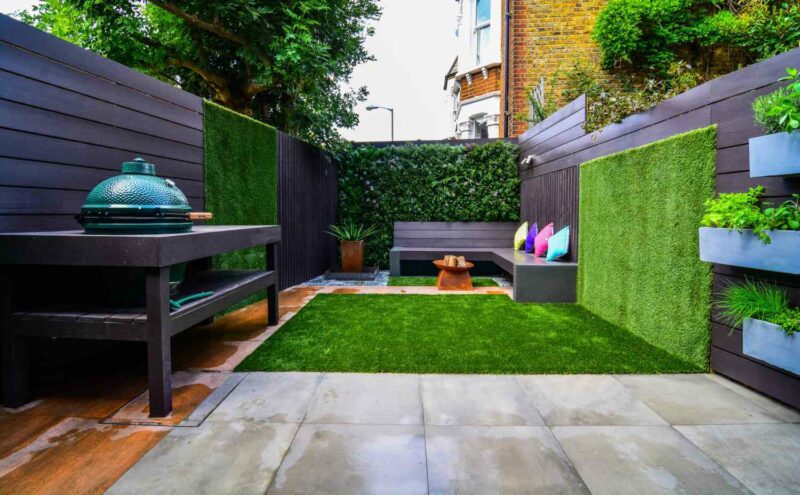Green Roof And Vertical Garden Solutions For Urban Environments

In the midst of towering skyscrapers and bustling city streets, the concept of bringing nature back into urban environments has gained significant traction. Green roofs and vertical gardens offer innovative solutions to combat the adverse effects of urbanization and create sustainable oases within concrete jungles. By integrating vegetation into the built environment, these green infrastructure solutions provide numerous environmental, social, and economic benefits. This article explores the transformative power of green roofs and vertical gardens in urban settings, highlighting their key advantages, design considerations, and real-world success stories.
Environmental Benefits
Green roofs and vertical gardens play a crucial role in mitigating the environmental impact of urban areas. Firstly, they help combat the urban heat island effect by reducing ambient temperatures through evapotranspiration and shading. This natural cooling effect can lower energy consumption for air conditioning and contribute to overall climate resilience. Secondly, these green installations improve air quality by capturing pollutants, absorbing carbon dioxide, and releasing oxygen. They act as effective filters, mitigating the effects of pollution and enhancing the well-being of urban dwellers. Additionally, green roofs and vertical gardens help manage stormwater runoff, reducing strain on municipal drainage systems and minimizing the risk of flooding. The vegetation’s ability to retain and gradually release water back into the atmosphere helps maintain water balance in urban areas.
Social Benefits
The integration of green spaces in urban environments positively impacts the well-being and quality of life of residents. Green roofs and vertical gardens provide opportunities for recreation, relaxation, and social interaction. Accessible rooftop gardens can serve as communal spaces for residents to unwind, exercise, and connect with nature, fostering a sense of community. The presence of greenery has also been linked to improved mental health and reduced stress levels, contributing to overall psychological well-being. Moreover, these green installations offer urban dwellers a visual respite from the monotony of concrete structures, promoting biophilic connections and creating a harmonious environment.
Economic Benefits
Green roofs and vertical gardens bring forth several economic advantages for urban environments. They can increase property values by enhancing aesthetic appeal and improving energy efficiency. Buildings with green installations often experience reduced energy costs as vegetation provides natural insulation, reducing heating and cooling needs. Moreover, green roofs can extend the lifespan of roofing membranes by protecting them from ultraviolet radiation and extreme temperature fluctuations, resulting in reduced maintenance and replacement costs. Furthermore, these green infrastructure solutions contribute to job creation in sectors such as landscaping, horticulture, and urban agriculture. The cultivation of rooftop gardens and vertical farms can generate employment opportunities while promoting local food production and self-sufficiency. Discover the benefits of incorporating green installations into urban environments by exploring veridiankogarah.com.au, a website dedicated to promoting sustainable living and design.
Design Considerations
Designing and implementing green roofs and vertical gardens require careful consideration of various factors. Structural integrity, load-bearing capacity, and waterproofing are critical considerations for green roofs to ensure the safety and longevity of the building. Irrigation systems, drainage mechanisms, and substrate selection play pivotal roles in maintaining healthy vegetation and preventing water-related issues. Vertical gardens require adequate structural support, irrigation systems, and appropriate plant selection based on light exposure and microclimates. Proper maintenance plans, including regular inspections and necessary interventions, are crucial to sustaining the health and vitality of green installations. To learn more about sustainable urban solutions, visit digitalbeanstalk.com.au for insightful articles on green roofs and vertical gardens.
Real-World Success Stories
Numerous cities around the world have embraced green roofs and vertical gardens, leading to inspiring success stories. The Bosco Verticale in Milan, Italy, stands as a testament to the possibilities of vertical greening, with its lush vegetation and integration of sustainable technologies. Singapore’s Gardens by the Bay showcases an array of innovative green roofs, vertical gardens, and sky gardens, transforming the city-state into a thriving green metropolis. Furthermore, cities like Copenhagen, Denmark, and Toronto, Canada, have implemented policies and incentives to encourage the adoption of green infrastructure, leading to significant increases in green roof installations.
Conclusion
Green roofs and vertical gardens offer transformative solutions for urban environments, turning concrete jungles into sustainable oases. These green installations provide a wide range of benefits, including environmental, social, and economic advantages. By reducing the urban heat island effect, improving air quality, managing stormwater runoff, and enhancing biodiversity, green roofs and vertical gardens contribute to a healthier and more resilient urban landscape. Moreover, they promote social well-being, creating spaces for recreation, relaxation, and community engagement. The economic benefits, such as energy savings, increased property values, and job creation, further highlight the value of these green infrastructure solutions. As cities continue to grapple with the challenges of rapid urbanization, embracing green roofs and vertical gardens can pave the way for more sustainable and livable urban environments. For comprehensive information on, visit ppponline.com.au, where you can find articles on the future of green roofs and vertical gardens delivery in the digital age.






